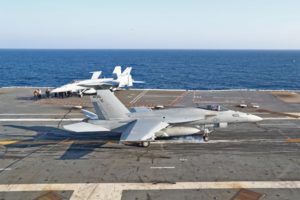
The Navy recently revealed that its secretive next-generation fighter program has transitioned to the design maturation phase and disclosed the main competitors hoping to build the aircraft. The Navy’s Next Generation Air Dominance (NGAD) program aims to ultimately replace the Boeing [BA] F/A-18E/F Super Hornet with a new jet dubbed F/A-XX. Aviation Week first reported that Cmdr. Mark Cochran, F/A-XX requirements officer at the Navy’s Air Warfare Division N98, said at the Tailhook Symposium on Aug. 26 that the program…

 By
By 











